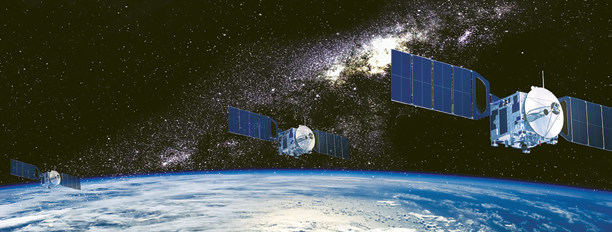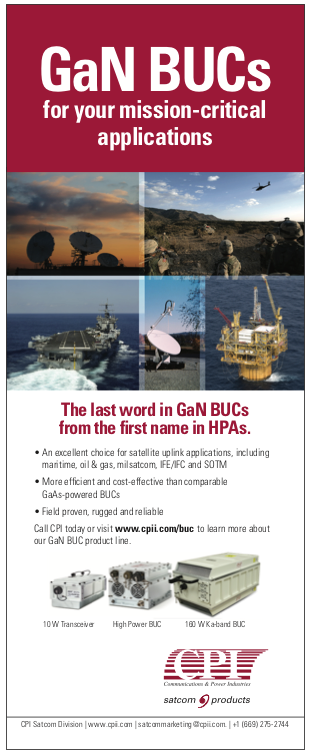Constellations interviews Chad Anderson, CEO of Space Angels, one of the most active investors in the space industry, with a portfolio that includes a who’s who of the emerging new space players. Chad discusses changes in the space industry, its investment, key trends, and attributes that separate the winners from the losers.
The original interview was edited for length and format.
John Gilroy, Moderator for Constellations
Welcome Chad. It’s unusual to see an investment portfolio focused exclusively on the space industry. How did Space Angels come about and why?

Chad Anderson (CA)
That’s correct, all we do is space. We’re early stage investors, so we focus on seed and Series A investments, and that means that we’re often the first check-in to a company.
I joined and took over Space Angels in 2012 and basically re-founded the company before there was much entrepreneurial activity to speak of. Today we’re a $15 million angel fund, and a $25 million venture capital fund that co-invests together.
If you look back, 2012 was when SpaceX first worked with the International Space Station, which was a key milestone in the industry. The previous key milestone was in 2009 when they successfully launched their first customer. They brought the price down of launch, but they also published their pricing and brought transparency to the market for the very first time. This allowed for entrepreneurs to enter the space market for the first time, to understand the cost to build a business plan, and to go out and raise funding and start businesses.
For example, pioneering companies like Planet and others that were using small satellites to disrupt the satellite market. That was the genesis. We recognized that there were lots of new companies that needed funding. There was a huge opportunity to not just disrupt the large $350 to 400 billion space economy that existed, but also to play an integral role in the new markets that were developing.
Constellations
It looks like you got in at the right time, and that there’s never been a better time to invest in space.
CA
Timing is everything. In 2012, we were still early, and it took some vision. Getting investors to put money into space companies still took a bit of selling in terms of helping them to understand the opportunity that was emerging, to help them understand the real risks.
Yes, it is rocket science in many cases, but they face a lot of the same business challenges that most other companies face. At the end of the day we are investing in businesses. We did a lot of work educating the market, helping them to understand the trends, that barriers had come down, and that the paradigm had shifted. There was now an opportunity for them to play a part in the new entrepreneurial Space Age.
Constellations
I’m thinking of an investor with some money looking at different options. They go to your website and you talk about meaningful impact and a 30X return — that’s quite appealing.
CA
Absolutely. If you look back on all the most successful entrepreneurs, often the founder has a big vision for how they’re going to change the world. They have an inspiring mission to rally around, and they’re able to attract the best talent. Especially in space, there’s only so much technical talent to go around, and so it’s often the entrepreneurs with the biggest, boldest vision, the most interesting imagination that are the most successful.
They’re able to get everyone on board, from the employees, to the board members, to the advisors, to the investors. If you assemble the right team, there’s no telling what you can accomplish.
Constellations
You say that only 5 percent of the space investment opportunities are even considered, which is a pretty small number. What are the criteria?

CA
The actual number is more like 2 percent. We run this number quite often, and we see every space company that’s looking for funding at the early stage. They know to come to us because we’re sector specific.
Last year we looked at 500 space companies and we’re investing in about 2 percent of them. At the first check-in at seed and Series A, a lot of times it’s a lot more art than science than if it was a Series C or D later stage investment. You can do analysis on discounted cash flows and back into what you think the value is, how risky it is, and put a value on that company. But the earlier you are in the company’s life, the more art it is.
You don’t have it all figured out. You may have a big, bold vision, and a general idea for how you’re going to carry that out. You’ve done the homework, you understand the input cost, what you think you can get it for, what the market looks like, what the competitive landscape is. All that is really important, but in the end it really boils down to the team that you’re investing in. Do they have the right vision? Do they have the necessary skill set on the technical and the business side to be able to handle the unexpected situations that will inevitably occur? Do they have the right temperament? Are they coachable? Are they the type of people who go out and seek advice? Are they realistic in their key assumptions? That’s really what we’re looking for.
When you see as many business plans as we do, you would be surprised at how many come across our desk where just the basic physics don’t close. You’ve got to get the fundamentals correct first.
We’re living and breathing space every day so we’re able to identify the gaps in the market. If we see a company that fits that gap, that understands the market, great, we take a look at their technology. If it’s feasible then we move on to the team. The earlier you are, the more important the team is and their ability to navigate uncertainties.
Constellations
I’m going to drill down a bit more on space investment opportunities. You’ve spoken about the satellite value chain. What that is?

CA
I’ll start with GPS and then move onto some more contemporary topics. When GPS started in the ‘70s it was purely a government initiative that was then transitioning to the private sector. People were saying, “Oh, GPS is fantastic ...but what are you going to use it for?” These experts would struggle to answer this because the use cases are infinite. They’d struggle to put their finger on the key one, or the one that fits in a sound bite. And so they would say, “Of course, it’s going to be used in everything.”
Today you see it in all the location-based services that we use, on our phones, Lyft, Uber, food delivery, you name it. So GPS is a great analogy for what’s happening in Earth observation at the moment. Affordable launch and transparent pricing allowed companies like Planet and others using a distributed network of small satellites to generate an unprecedented amount of new data. Instead of having one monolithic satellite, Planet is operating 180+ satellites, the largest constellation in the world, and they’re taking an image of every corner of our planet on a daily basis.
This is a great start, but we’re going to even have more data going forward, and different types of data that fill different needs. So we’ve got all this disruption happening on the data sourcing hardware side of things. Then, how do you bring this unprecedented amount of new data down to the ground? And so now there’s innovation on the ground segment in terms of commanding and controlling all of these new satellites, mission control services, downloading that data and getting it to where it needs to go.
That’s where investment is going. But if you go a layer deeper, there’s an opportunity for data aggregation and a distribution platform that’s source agnostic. A company won’t just try to sell their own data, but rather to answer the market need or question with whatever the appropriate data is.
A shipping customer may want to know the number of ships in port in Singapore yesterday versus last week, or going forward for the next six months. You can take that query out to market to see which companies have the right data for that need. It might be optical imagery. Or if there’s cloud cover, you might need radar. And if that data is accessible now through an API, you can get to the end solution with a Google type search without the end customer needing much capital. They can hop on the internet to find out ‘What is the corn stock in the Western U.S. today versus six months ago?’
Using a sort of basic language question, an answer will pop up for you, with a bit of advertising around it, but it will be basically free to the end user. We’re finally getting to this place, and we’re investing way down deep into that value chain, where there’s some really interesting things happening.
Constellations
You’re covering a lot of territory. Speaking of which, don’t you have a report that comes out quarterly? Tell us about that.
CA
Yes. We began pulling together all the investment transactions to get a sense of what was being funded, and who was funding them. Now we release the Space Investment Quarterly, which goes through the key milestones in what we call the Entrepreneurial Space Age from 2009 until present.
It shows how we’ve gone from a dozen or so privately funded space companies globally in 2009 to 435 as of today accounting for over $20 billion in investment. It includes which regions, the type of industries, which are early stage or late stage, and more.
Constellations
Whereas, 20 to 30 years ago, it was the government providing funding, now we have iconic figures like Jeff Bezos, Elon Musk and Richard Branson. The whole demographic of investors in space has changed hasn’t it?
CA
Absolutely. In 2016, it was primarily corporate investors, basically the incumbents that had been in space the last few decades, and now we have a new crop of entrants. We saw a lot of that in 2016 and 2017 driven by individuals. Jeff Bezos famously revealed that he would sell a billion dollars in Amazon stock each year to fund Blue Origin. He then sold $2 billion.
And then in 2018 we saw investment driven by private equity and retail investors, a lot of them flocking to SpaceX for the success that they’ve seen in their Falcon Nine reusability, the Falcon Heavy, and also the Starlink constellation. So, you have Government that transitions to private investment, with early investment by incumbents that know the space well, and then individuals, angels, VC funds, and then private equity and retail coming in later. It’s amazing to see how fast it’s come together over the last three or four years.
Constellations
You did well predicting things in 2012, so what are the key investment trends that you see happening in the next few years?
CA
We predicted that 2018 would be the year of small launch, and we watched that come true. Last year, we saw the first small launch vehicle begin operations, and a number of others reached advanced stages of technical development, with over $1.5 billion of equity investment to help fund these companies.
We’ll see some more small launch vehicles coming online, but with multiple crew spacecraft coming online, 2019 will undoubtedly be the year of commercial space travel. In fact, with SpaceX, Boeing, Virgin Galactic, and Blue Origin all inching closer to being the first privately funded space companies to launch commercial passengers into space, we definitely think that this is going to be true.
In communications, OneWeb is launching hundreds of satellites to provide internet to remote areas. The big name obviously is SpaceX’s Starlink launching thousands of satellites in lower orbit to be able to provide connectivity to everywhere on the planet. And Amazon is getting into the game as well, with plans to launch 3000+ of their own satellites for the same purpose.
Constellations
We have lots of satellites up there, so the hardware may not be the hard part, but rather this data aggregation.
And when you said Amazon, I’m thinking of Amazon Web Services, the amount of data storage they have along with artificial intelligence. With all that experience will Amazon be the one to dominate in the long run?
CA
They’ve certainly got a leg up in a few areas. They’re a commonly owned company that can launch it, they have lots of experience handling the data, and they can also price in the revenue from the consumer business as well. But you’re right, there are a lot of software solutions when it comes to intelligence and information.
Space situational awareness is another great example of new companies coming in and doing things that were historically done only by governments. They’re able to do it for a fraction of the cost, and much higher fidelity. We’re seeing some companies really start to shape that. Knowing where things are in space is really important when you’re going from 1,500 satellites in orbit today to tens of thousands in the very near future.
But I wouldn’t say hardware is out. With NASA’s push to go back to the moon, and their commitment to work with new commercial partners on programs like Commercial Lunar Payload Service there’s opportunity in lunar transportation too.
Constellations
It seems public-private partnerships are a direction that NASA is going, where they’re providing the best practices and know-how, and trying to pick partners that will be able to take advantage of that.
CA
Yes, they’ve found a lot of success with commercial cargo and now commercial crew. It’s becoming incredibly obvious with commercial crew, they made a safe bet in the contractor that they knew in Boeing, and they made a risky bet in a relatively new up-and-comer when they invested in and they pre-purchased flights with SpaceX very early on.
I think we’re starting to see that materialize now with SpaceX being months ahead of schedule and doing it for a fraction of the cost. This is really starting to inform some opinions, meaning why would you not do this type of partnership going forward?
The Eclipse Program that I mentioned looks very similar to commercial cargo and commercial crew. It’s very encouraging to see that NASA sees the value in these types of partnerships where they act as a customer versus a benefactor or a development funder. They’re now acting as a customer to purchase services from private companies, and allowing them to come up with the solutions, and do so at high quality and a low cost.
Constellations
Chad, we’re on the two-minute drill here. What groundbreaking technology do you see coming in the next four or five years? Will it be laser communication with satellites? Will it be ground systems? Or maybe data aggregation?
CA
That’s the golden question and every day we’re trying to figure that out. But I think we’ve got a pretty good idea, and it’s really in this area in the satellite value chain, and the EO, Earth Observation side of the house. I think that we’re going to see that incorporated into our everyday lives on a scale similar to GPS, and that’s going to happen very soon, a year and a half, two years’ time scale, so that’s exciting.
I’m also excited about the lunar side. Again, all of this initiative, and all of this push, and all of this ambition to get back to the moon and working with private companies. With all these new satellites in orbit I think we’re going to start to see a lot more networks, constellations, and the efficient way to do that, the most feasible way to do that, and the optimal way to do that is through a mesh network with laser links.
We’ll start to see a lot more optical come into play, intersatellite links and also to ground links. It’s just a better way. And when you’re talking about the sums of data that we’re talking about I think there’s a lot of opportunity, but we’ve still got more work to do.
Constellations
I’d like to thank our guest, Chad Anderson, the CEO of Space Angels.
www.spaceangels.com
Listen to this and 50 other podcast interviews on Constellations at
www.kratoscomms.com/constellations-podcast
Stay up to date with the latest episodes delivered straight to your device —Subscribe to Constellations at
www.kratoscomms.com/constellations-podcast/episodes
Have a topic you would like us to discuss? Email Podcast@KratosComms.com


